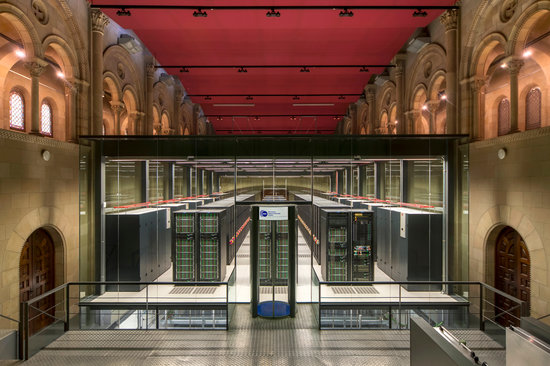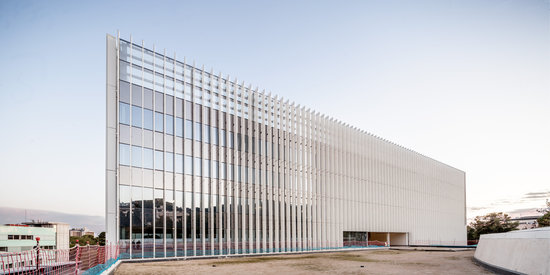Personalized medicine and predictive maintenance - Barcelona’s new Supercomputer
Everything you need to know about Barcelona’s new €200 million Mare Nostrum 5

On December 31st, 2020, the Mare Nostrum 5 Supercomputer will be switched on, and Europe will take a giant step forward and enter the pre-exascale level of high-performance computing. Barcelona’s latest generation Supercomputer will be among the world’s most powerful machines, but what exactly will it be capable of, how will it be used, and what will it mean for Catalonia?
A supercomputer is a computer with thousands of connected processors. Barcelona’s new one will be between 15-20 times faster than the supercomputer it will replace, and 10,000 times quicker than the Mare Nostrum 1, the original that was built in 2004.
“Supercomputers are tools for scientists, formed by thousands of smaller computers working together,” explains the associate director of the Barcelona Supercomputing Center, Josep Martorell. Compared to a top-of-the-range consumer PC, this new machine will be millions of times more powerful.
The Mare Nostrum 5 supercomputer will be built in the Torre Girona Chapel, located on the campus of the Polytechnic University of Catalonia. The increase in computational power of the new computer compared with its previous generation at the same site is so vast that some of the processor racks will need to be stored in the basement of the chapel, and others in an adjacent building being constructed specifically to store them.
It will cost 1.5 million euro annually to power and cool it, and will use 1 megawatt of energy each year, enough to power 750-1000 homes.

Economic impact
With new, more powerful computational power in Catalonia comes new opportunities for the scientific community. The European Commission are funding half of the 200 million euro necessary to construct the new Supercomputer, and Martorell cited this speaking about the economic impacts of the Mare Nostrum 5.
“The economic impacts of a facility like this can be easily seen in the amount of money we’ll be able to attract from public and private firms to conduct our research. For instance, today our center is the top Catalan institution for how much money we can attract from the European Commission for funding of basic research,” he said.
“All this money we can attract means more jobs. It means the capacity of creating new jobs, high level jobs, for technological people, this is the direct impact you can see from having a facility like this. It will give us a lot.”
How fast will it be able to run?
The performance of Supercomputers is measured in FLOPS, meaning floating point operations per second; essentially the amount of calculations the machine is capable of making every second.
The new ultra-powerful machine will be capable of peak speeds of 200 petaFLOPS, which is 200 billion billion calculations per second.
In other words, this computer will be capable of the same output as 6.3 billion people making a calculation every second for an entire year - all in one second.
Supercomputer uses
As Supercomputers can carry out so many more calculations, so much faster, than what regular computers or even humans are capable of, they can be put to use in different ways than what people are familiar with using computers for.
Martorell says “scientists are using Supercomputation, high-performing computing, for almost every scientific field you can imagine, even social sciences, for economics, but probably the field that we can most easily see the effects of is in medicine, in biomedical fields.”
The Barcelona Supercomputing Center associate director went on to give a real-world example of the use of the machines. “Today for example in Barcelona we have many hospitals where some doctors are using these resources just to decide which type of treatments to use with a patient.”

“This is what they call a ‘precision medicine partner.’ To cure a pathology, it’s not the same in one patient as it is in another. If you’re able to use all the data you have about one patient, and you’re able to compare this data with all the old cases you have, using our computer, you can decide which is the better type of treatment to use in any case,” Martorell explains.
Indeed, the only limitation of what the machine will be capable of doing could be the scientists’ own imaginations.
‘Predicting’ the future
If fed substantial quantities of relevant data, high-performance computers are able to offer predictive models of behaviour. Utilized in the right manner, Supercomputers can offer predictive maintenance services, which aim at predicting when problems could occur in any given system, allowing people to act ahead of time and prevent the problems.
Josep Martorell speaks about the projects his institute are working on with Aigües de Barcelona, the Barcelona city water network.
“We are trying to help them predict failures in the system. They have a lot of data over the past years, and based on this data we can run some artificial intelligence algorithms to be able to do what they call ‘predictive maintenance,’ trying to predict where is the highest probability to have some problems in the network, and if you can do something before it happens.”